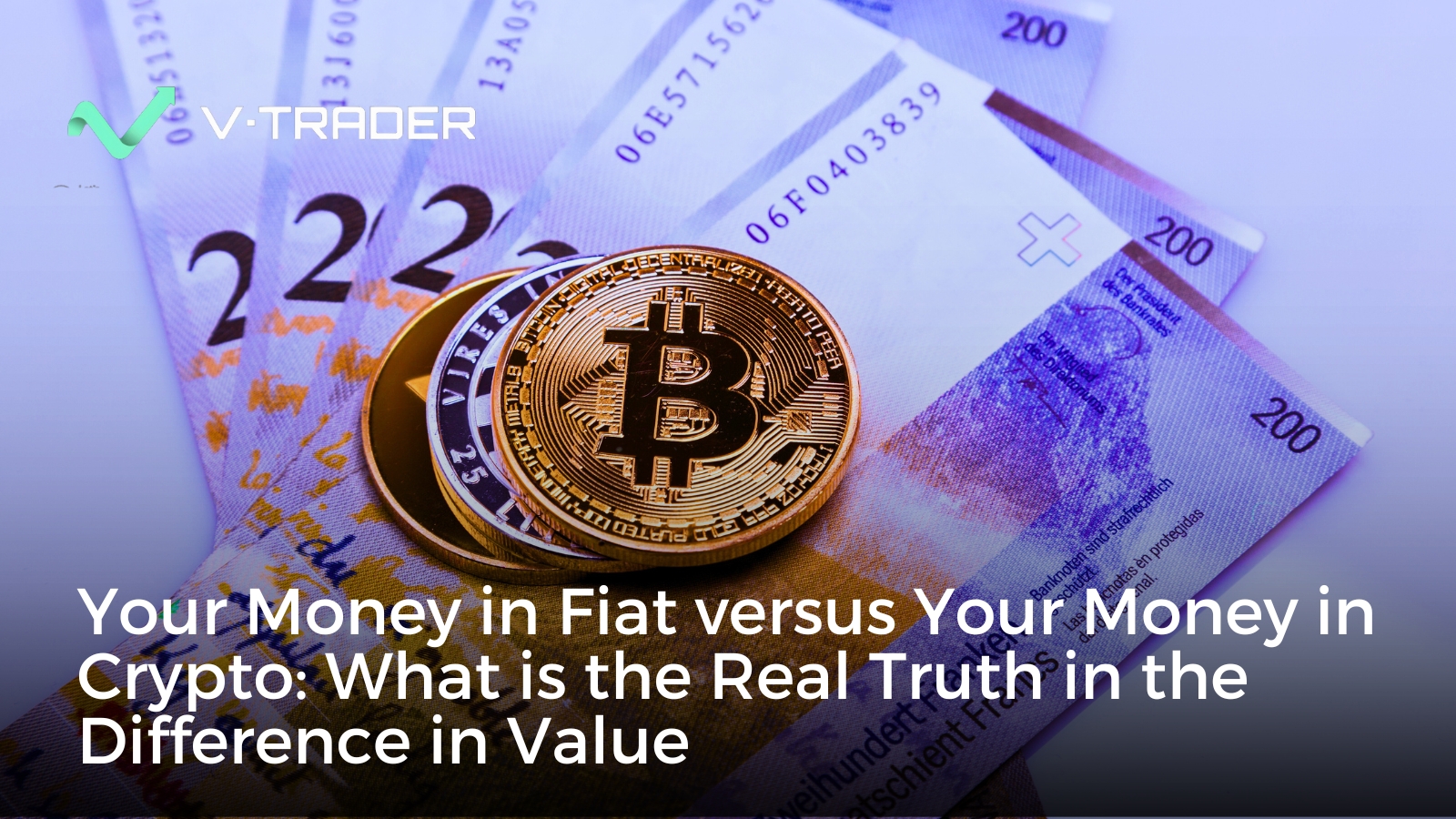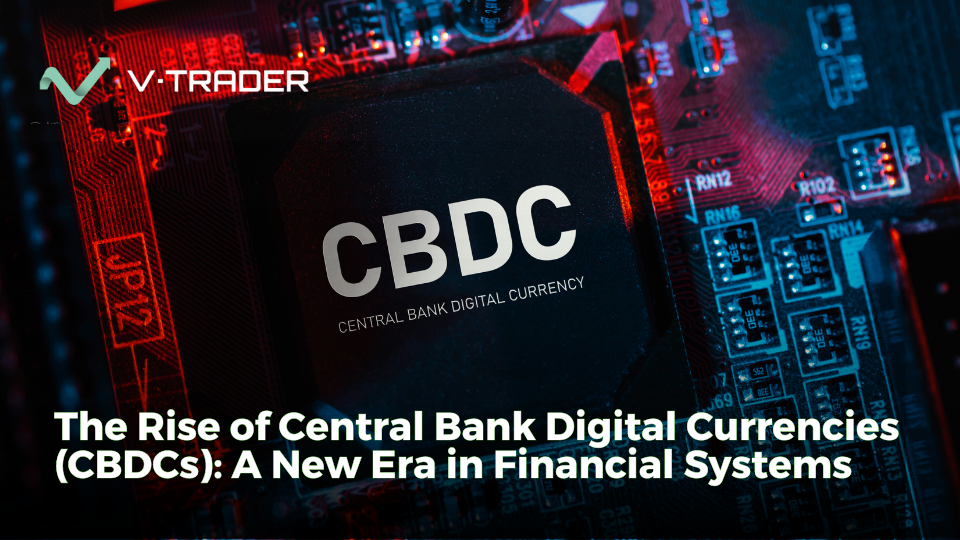The debate over fiat vs crypto is at the heart of financial discussions today. Both fiat currencies and digital assets play critical roles in the global economy, yet they operate under vastly different conditions. Fiat money is controlled by central banks and regulated by financial institutions, while cryptocurrencies like Bitcoin function in a decentralized system without a central authority.
With the rapid evolution of blockchain technology and growing concerns over inflation, debt, and financial sovereignty, people are beginning to question the long-term viability of fiat money vs cryptocurrency. Can digital assets revolutionize how we shop, or will fiat currencies remain the dominant currency of exchange?
In this article, we’ll explore the advantages and disadvantages of both, highlight their key differences, and examine their potential futures.
What Is Fiat Currency?
Fiat currency refers to government-issued money that derives its value from government backing rather than physical assets like gold or silver. The dollar, euro, yen, and almost all global currencies fall under this category.
Governments and central banks, such as the Federal Reserve and European Central Bank, control fiat currencies by regulating the money supply, setting interest rates, and implementing monetary policies to manage inflation and economic stability.
| Pros of Fiat Currency | Cons of Fiat Currency |
| Stability and Predictability – Fiat is generally more stable than crypto because it’s backed by government regulation and managed by central banks. It doesn’t experience the same wild price swings as Bitcoin or other digital assets. | Inflation and Loss of Value – Fiat currencies are subject to inflation because governments can print more money, reducing purchasing power over time. For example, the US dollar has lost almost 97% of its value since 1913. |
| Widespread Acceptance – Fiat currencies are universally accepted as a medium of exchange for goods and services, making them far more convenient for everyday use than crypto. | Central Bank Control and Manipulation – Central authorities can impose policies that affect currency value, such as quantitative easing, which can devalue savings. |
| Regulation and Consumer Protection – Bank deposits in many countries are insured. This provides security in case a bank fails, something crypto doesn’t offer. | Slow and Expensive Transactions – Bank transfers and cross-border payments can be slow, costly, and require intermediaries, especially compared to blockchain transactions. |
| Ease of Use – People are already familiar with fiat money, and it integrates easily with traditional payment systems, credit cards, and online banking. | Dependence on Financial Institutions – Fiat money requires trusted third parties like banks, which can create delays and costs in transactions. |
What Is Cryptocurrency?
Cryptocurrency is a decentralized digital form of money that operates on blockchain technology. Unlike fiat currencies, crypto is not controlled by a central authority such as a government or central bank. Instead, it is governed by a decentralized network of computers validating transactions.
The most well-known crypto is Bitcoin (BTC), but thousands of digital assets, such as Ethereum (ETH), Binance Coin (BNB), Avalanche (AVAX), and Solana (SOL), also serve various purposes in decentralized finance (DeFi) and smart contract applications.
| Pros of Cryptocurrency | Cons of Cryptocurrency |
| Decentralization and Financial Sovereignty – Users have direct control over their assets without relying on banks or financial institutions. Transactions do not require third-party authorization. | High Volatility – Crypto markets experience extreme price swings due to speculation, adoption rates, and regulatory uncertainty. This can lead to both significant gains and losses. |
| Security and Transparency – Transactions are secured through cryptographic algorithms, making fraud and counterfeiting nearly impossible. The blockchain ledger is publicly accessible, ensuring transparency. | Regulatory Uncertainty – Many governments have yet to establish clear regulations for cryptocurrency, leading to inconsistent policies that can affect its adoption and legality. |
| Fast and Low-Cost Transactions – Crypto transactions are often quicker and cheaper than traditional banking methods, especially for international payments, which can take days through banks but minutes on the blockchain. | Limited Acceptance – While adoption is increasing, many merchants and businesses still do not accept crypto as payment, making it less practical for everyday transactions. |
| Scarcity and Inflation Resistance – Unlike fiat currencies, some cryptocurrencies like Bitcoin have a fixed supply, protecting them from inflation caused by excessive money printing. | Security Risks and Irreversible Transactions – Crypto wallets and private keys must be securely stored. Lost or stolen funds cannot be recovered if sent to the wrong address. |
What Are the Differences Between Fiat Money and Cryptocurrency?
The difference between fiat currency vs cryptocurrency extends beyond price and volatility, it also impacts how people store, transfer, and perceive money in the modern world.
Here are the most critical distinctions:
- Control and Regulation
- Fiat currency is controlled by central banks and regulated by financial institutions. Monetary policies dictate its supply and value.
- Cryptocurrency operates on a decentralized network, free from government intervention. Users have full control over their assets.
- Supply and Creation
- Fiat currencies have no fixed supply. Governments can print more money, leading to inflation.
- Cryptocurrencies like Bitcoin have a capped supply (21 million), making them scarce and deflationary.
- Transaction Process and Speed
- Bank transactions, especially international transfers, can take days to settle due to intermediaries.
- Crypto transactions settle in minutes (or seconds), eliminating middlemen and reducing processing delays.
- Security Features
- Fiat money relies on banks and institutions for security, making it vulnerable to fraud and hacking.
- Crypto transactions are secured by cryptographic protocols and a decentralized blockchain ledger.
- Market Volatility
- Fiat money is stable, with governments ensuring controlled fluctuations.
- Cryptocurrencies are highly volatile, with prices influenced by demand, speculation, and regulatory changes.
- Global Accessibility
- Fiat money requires bank access, which many in developing countries lack.
- Crypto enables anyone with an internet connection to store and transfer money, promoting financial inclusion.
- Transaction Cost
- Bank transactions often involve high fees, particularly for international transfers.
- Cryptocurrency transactions typically cost less due to the absence of middlemen.
Future Perspective: What is the Anticipated Trajectory for Fiat Currency and Cryptocurrency?
As technology advances, both fiat currencies and crypto are evolving. The world is slowly shifting toward digital finance. Governments are exploring central bank digital currencies (CBDCs), a hybrid between traditional fiat money and blockchain-based assets.
Meanwhile, Bitcoin and other cryptocurrencies continue gaining mainstream adoption, with institutions integrating crypto into their payment networks. Countries like El Salvador have adopted Bitcoin as legal tender, while major corporations have begun to accept crypto payments.
The future likely holds a blend of both systems, where crypto plays a more significant role in cross-border transactions and financial sovereignty, while fiat currencies remain dominant in regulated economies.
However, as trust in traditional financial institutions wavers, the appeal of decentralized digital assets will continue to grow.
FAQs
Is cryptocurrency better than fiat currency?
It depends on usage. Cryptocurrency offers faster transactions, lower fees, and decentralization, making it superior for international transfers and financial independence. However, fiat currencies provide stability and legal protections, making them more practical for everyday transactions.
Will cryptocurrency replace fiat money?
While crypto adoption is rising, fiat currencies are deeply ingrained in economic systems. Rather than full replacement, it is more likely that crypto and fiat money will coexist, with each serving specific financial needs.
What are the risks of investing in cryptocurrency?
Cryptocurrency investments come with high volatility, regulatory uncertainty, and security risks, such as hacks or losing access to private keys. The lack of government backing and consumer protections also adds a level of risk that investors must carefully consider before getting involved.
Conclusion
The financial landscape is changing, and the comparison between fiat and cryptocurrency is at the top of this transformation. While fiat currencies offer stability and the security of institutional backing, cryptocurrencies open the door to decentralization, transparency, and true financial independence.
As the world embraces new technologies, traders and investors must be proactive in understanding how these two forces shape the future of money.
The future is in your hands, empower your trading journey with vTrader, where the best of both worlds comes together seamlessly. Let them help you navigate this exciting financial revolution. Start today and experience a smarter way to trade.

Steve Gregory is a lawyer in the United States who specializes in licensing for cryptocurrency companies and products. Steve began his career as an attorney in 2015 but made the switch to working in cryptocurrency full time shortly after joining the original team at Gemini Trust Company, an early cryptocurrency exchange based in New York City. Steve then joined CEX.io and was able to launch their regulated US-based cryptocurrency. Steve then went on to become the CEO at currency.com when he ran for four years and was able to lead currency.com to being fully acquired in 2025.




I¦ve learn some good stuff here. Certainly price bookmarking for revisiting. I surprise how so much effort you place to create such a wonderful informative website.